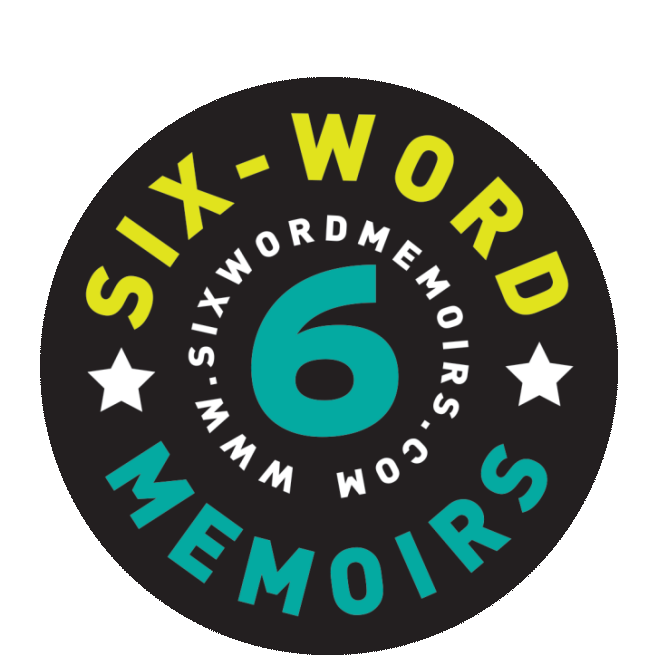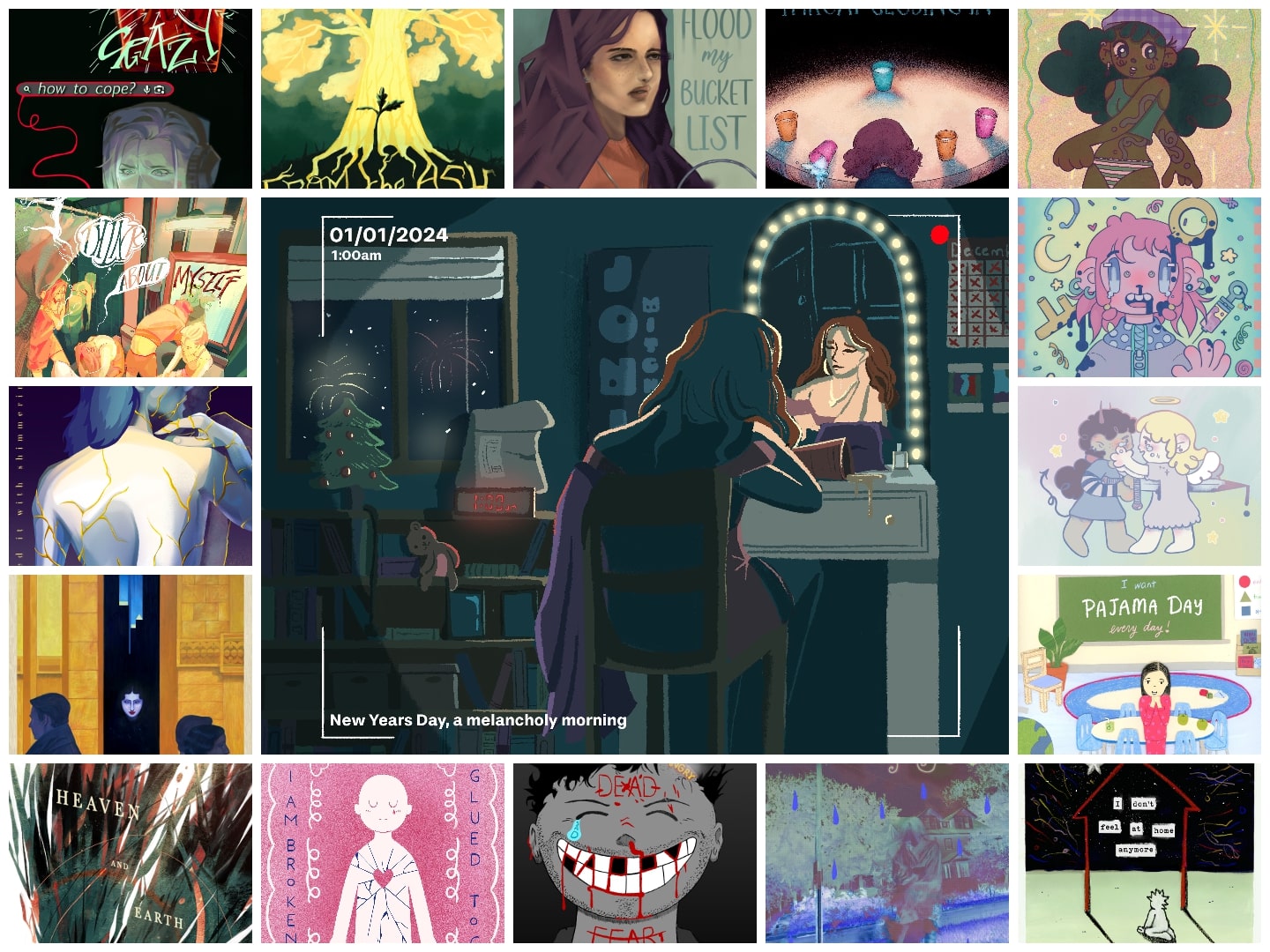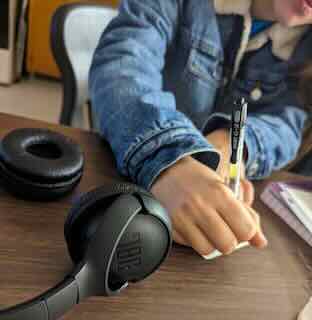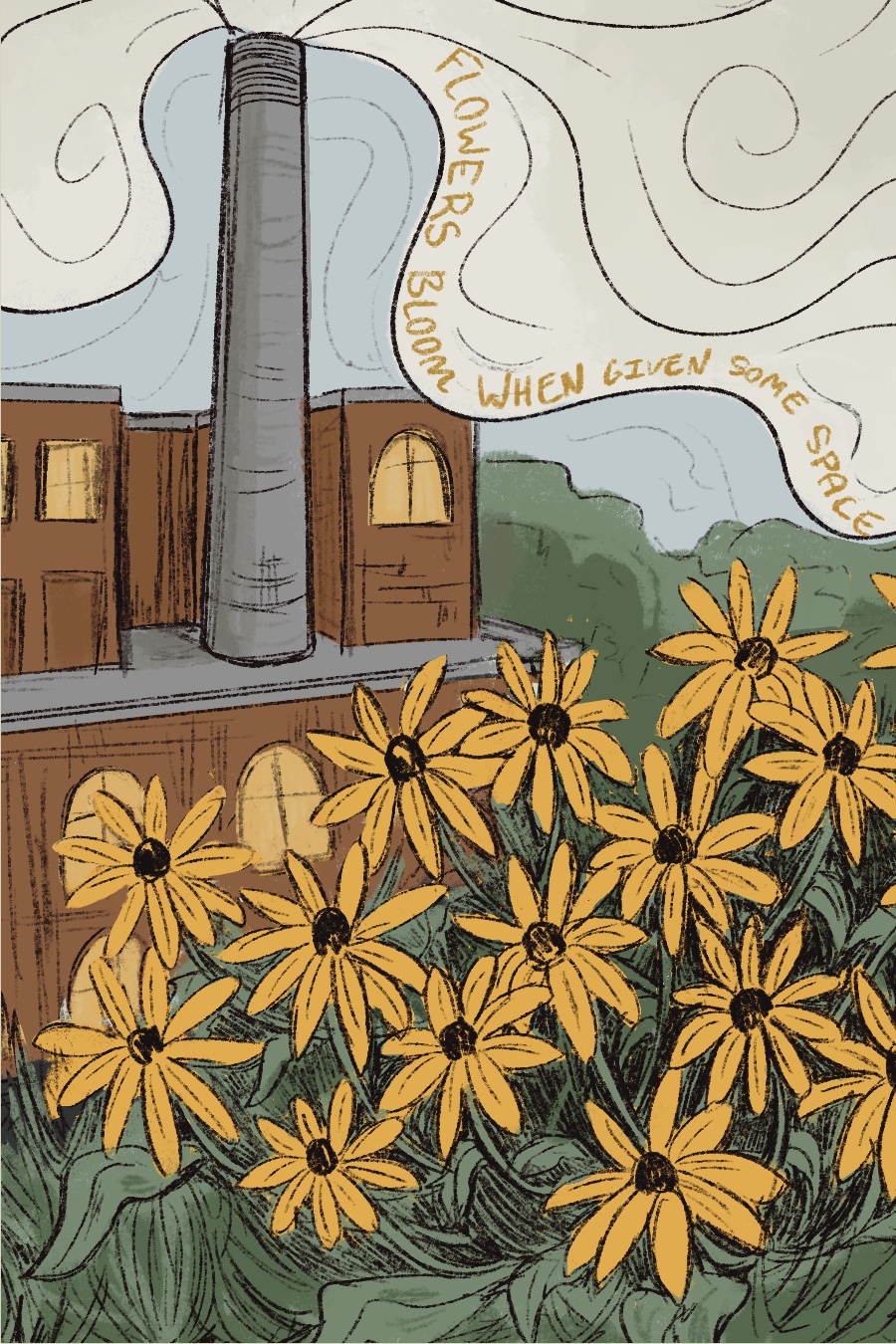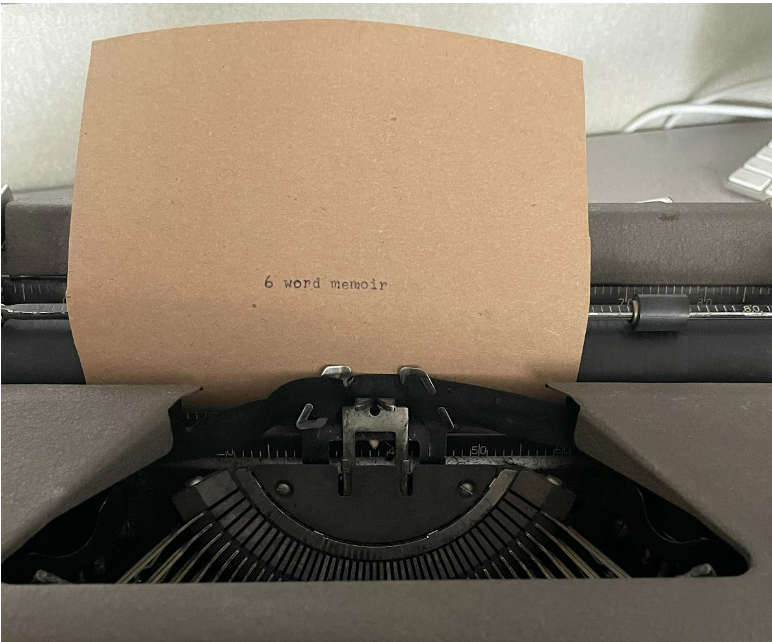Kileen Gilroy: Concision and Critical Thinking in Middle School
Kileen Gilroy a 7th-grade English Language Arts teacher at Lincoln Middle School in Rhode Island, first discovered the Six-Word Memoir format at the very start of her teaching career, eleven years ago, when she was teaching 9th-grade high school students. “A colleague had introduced me to the platform and I thought it was such a cool and unique way for students to share an aspect of their stories and who they are, she says. “This project really requires students to critically think, select vocabulary wisely, and often proves in writing, that less is more.”
Prof. John Ferry: Mastering the “Art” of the Six-Word-Memoir
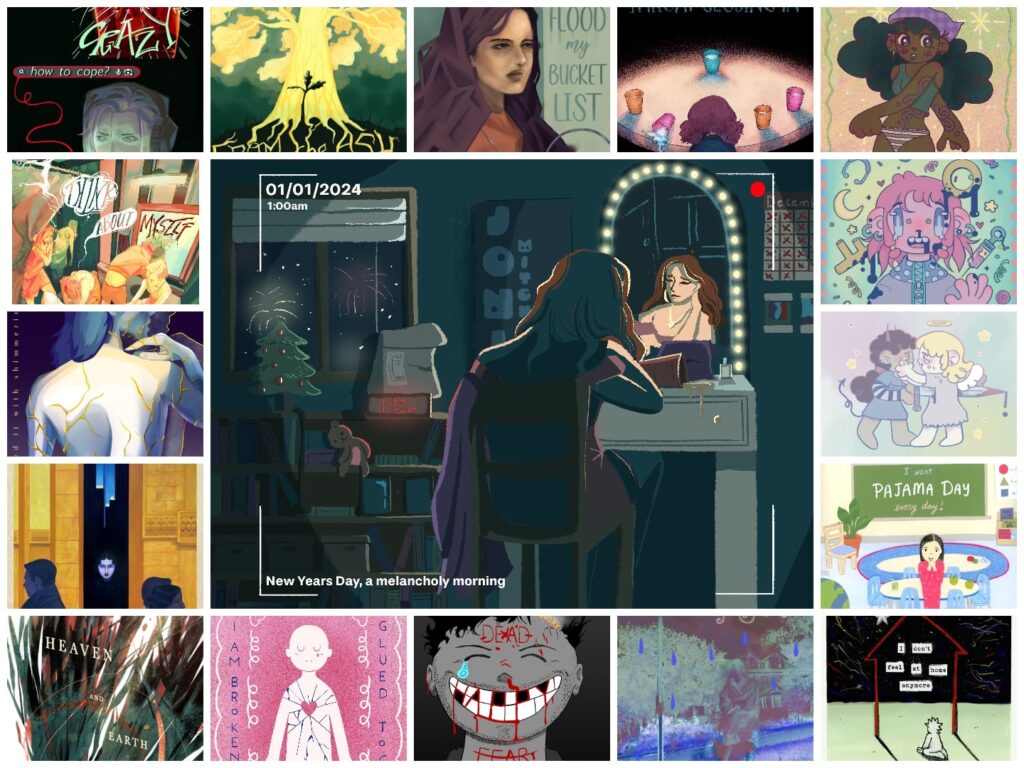 Back in 2016, John Ferry, a professor at the Kansas City Art Institute, heard Six-Word Memoir founder Larry Smith talking about the popular short form of self-expression on NPR and inspiration struck.
Back in 2016, John Ferry, a professor at the Kansas City Art Institute, heard Six-Word Memoir founder Larry Smith talking about the popular short form of self-expression on NPR and inspiration struck.
Tabitha Cooper: From One Class to a School Community
Tabitha Cooper’s first exposure to Six-Word Memoirs came in the form of a perfect condition copy of I Can’t Keep My Own Secrets she picked up in her local bookstore. Years later, Cooper’s copy of the book is well-worn and Cooper has implemented the idea into her English classes at Metamora Township High School in Metamora, Illinois, where she teaches. Cooper was attracted by the alignment the book had with what she was teaching. “Six-Word Memoirs is a brilliant way to introduce memoirs in a classroom by starting off small and then kind of growing from there,” says Cooper. “I also thought it was an ideal way to teach connotation, denotation, and word choice and its value within a classroom when you only have six words to work with. I just kind of stumbled onto the book; now it's totally worn out and covered with post-it notes now and I love it.”
Jennifer Mayberry cooks up Six-Word Memoirs with her students
Jennifer Mayberry, a Family and Consumer Sciences teacher at Skowhegan Area High School in Skowhegan, Maine, has introduced Six-Word Memoirs to — wait for it! — all six of her classes. Mayberry initially discovered Six-Word Memoirs in an English methods course at Endicott College and began employing the activity in her classes because of the accessibility of the form.
“The Power of One Word”: English Teacher Mary Lochtefeld Teaches Concise Writing
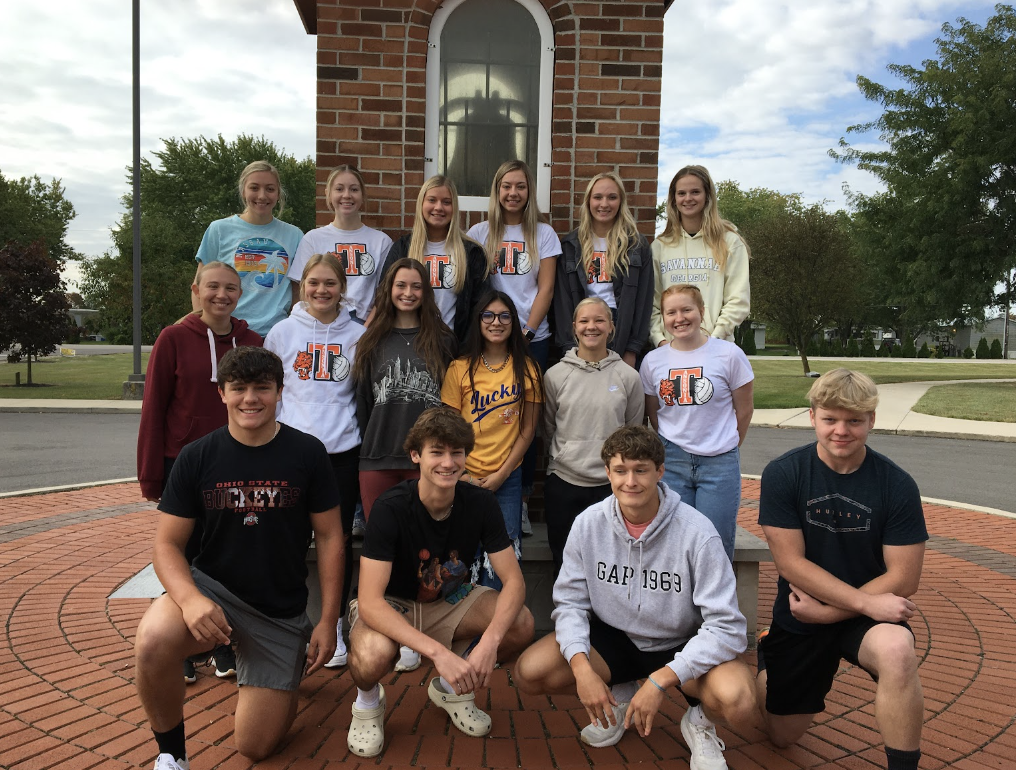 According to English teacher Mary Lochtefeld, great writing has the exact right number of words. When she introduced Six-Word Memoirs to her classes at Ansonia Local Schools in Ansonia, Ohio, the exact right number was six.
Lochtefeld discovered Six-Word Memoirs during a graduate class at Miami University she took over the past summer and decided to introduce it to her own classroom this fall. “The form seems easy at first and then when kids realize that they have to be really choosy about the words it becomes a little bit more difficult and really allows me to see if they understand the content,” says Lochtefeld.
According to English teacher Mary Lochtefeld, great writing has the exact right number of words. When she introduced Six-Word Memoirs to her classes at Ansonia Local Schools in Ansonia, Ohio, the exact right number was six.
Lochtefeld discovered Six-Word Memoirs during a graduate class at Miami University she took over the past summer and decided to introduce it to her own classroom this fall. “The form seems easy at first and then when kids realize that they have to be really choosy about the words it becomes a little bit more difficult and really allows me to see if they understand the content,” says Lochtefeld.
John Ferry’s 2023 “Image and Form” Class at Kansas City Art Institute
[caption id="attachment_27833" align="aligncenter" width="350"]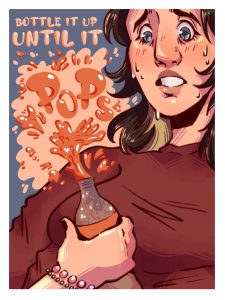 "Bottle it up until it pops." — Taylor Ingram[/caption]
2023 marks the seventh year since Professor John Ferry started teaching Six-Word Memoirs in his “Image and Form” class at the Kansas City Art Institute (KCAI) in Kansas City, Missouri. Ferry first discovered Six-Word Memoirs in 2016 after listening to an NPR segment, and rushed to implement the idea in his art classes.
"Bottle it up until it pops." — Taylor Ingram[/caption]
2023 marks the seventh year since Professor John Ferry started teaching Six-Word Memoirs in his “Image and Form” class at the Kansas City Art Institute (KCAI) in Kansas City, Missouri. Ferry first discovered Six-Word Memoirs in 2016 after listening to an NPR segment, and rushed to implement the idea in his art classes.
Melanie Abrams’ Short Fiction Class at UC Berkeley: The Core of a Character
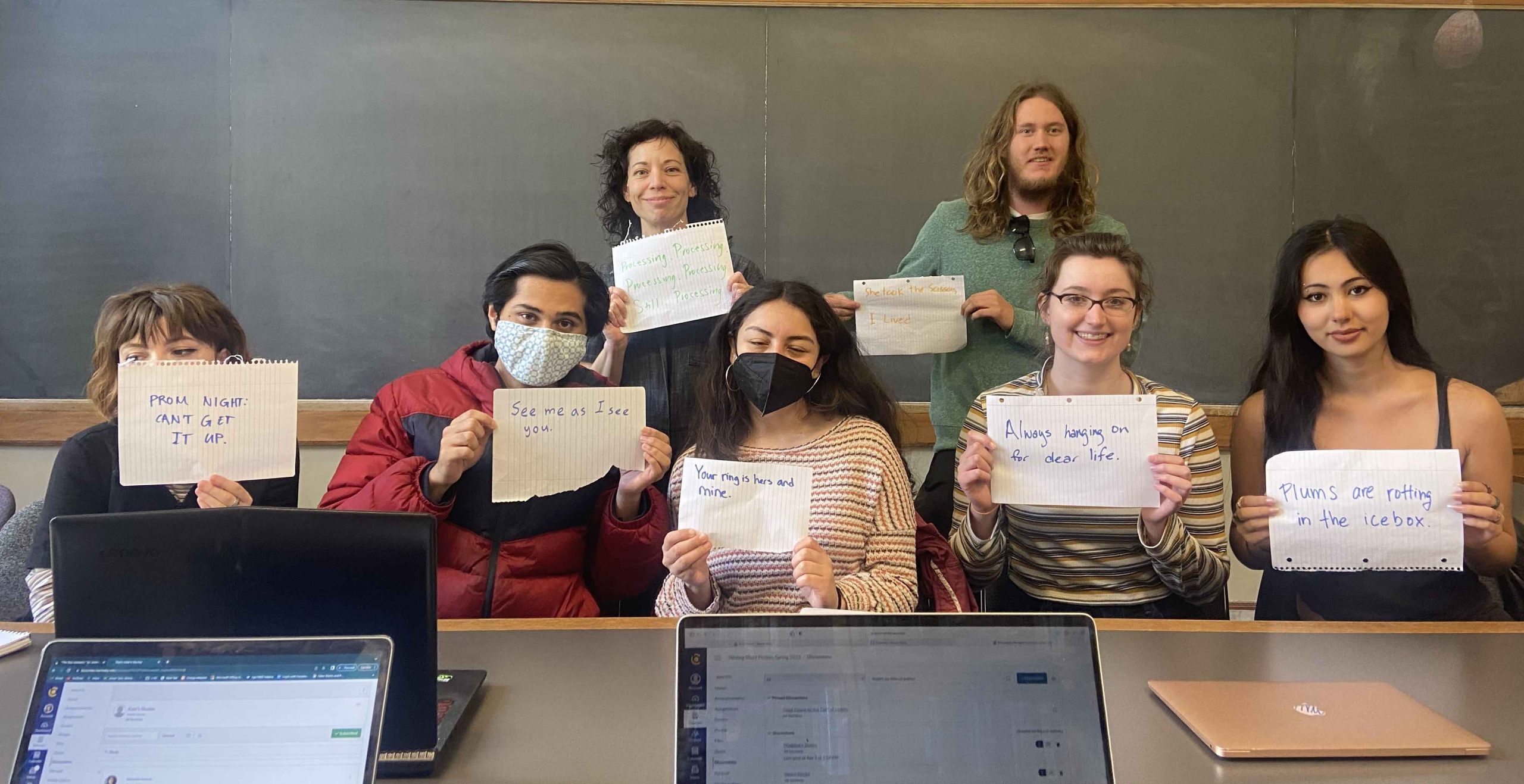 It was the day after Valentine’s Day that I walked into my upper division Short Fiction class at UC Berkeley to find a stranger seated beside my professor. He introduced himself as Larry Smith, a close collaborator of my professor Melanie Abrams, and asked if anyone in the room had heard of Six-Word Memoirs, the short-f0rm storytelling website he started.
It was the day after Valentine’s Day that I walked into my upper division Short Fiction class at UC Berkeley to find a stranger seated beside my professor. He introduced himself as Larry Smith, a close collaborator of my professor Melanie Abrams, and asked if anyone in the room had heard of Six-Word Memoirs, the short-f0rm storytelling website he started.
Six Words and Numerous Changes at Libra Academy, Huntington Park, California
Ninth-grade teacher Aanya Ismail first learned about Six-Word Memoirs through conversations with coworkers at Libra Academy, Huntington Park, California. Ismail was looking for ways to revamp writing exercises and invite student expression. After discovering the Six-Word Memoirs website and setting up a Zoom meeting with founder Larry Smith, Ismail was encouraged that the six word format would be a successful exercise for her narrative writing unit. To ease her students into Six-Word Memoirs, Ismail started with casual journal prompts like, "What event in your life got you to where you are now?" and then gradually opened things up with themes like family, life, and overcoming challenges. The short and concise nature of Six-Word Memoirs was also emphasized during the project.
